- In recent years “managed resource protected areas”— forests where local people control the use of natural resources — have sprung up across Madagascar, aiming to spark both economic development and conservation, and to include nearby communities in important decision-making.
- But the community groups managing these forests often struggle to exert real control over the landscapes they’ve been asked to protect, and complain that promised development assistance has never materialized.
- Nevertheless, proponents say the approach can succeed with the right project design, and sufficient funding and support.
- This is the first story in Mongabay’s multi-part series “Conservation in Madagascar.”
ANOSY REGION, Madagascar — The land in the Mandrare River Basin, in southeastern Madagascar, does not seem like the kind of place that could support an economy based on wood. The trees are low, scrubby, covered with thorns. Succulents stretch fleshy spires into a cloudless sky. Vast sisal plantations cover the dusty plains landscape in a grid.
But the shoulder of the road that leads west is soon dotted with a display of the spiny forest’s prodigious output: there are thick, carved wooden blocks made to prevent runaway trucks, makeshift stands piled head-high with charcoal in 100-pound sacks, and rough wooden planks hewn from the trunks of spindly Madagascar ocotillo (Alluaudia procera), used locally to build houses.

Manadidy Roandria isn’t sure how long all this can last. If there is any forest left on the protected mountainside above his home, he says, it’s thanks to the fact that there’s another parcel nearby with no restrictions on what can be cut. “Without that,” he says, “the forest would be attacked very quickly.” Soon that neighboring parcel will be cleared and planted with sisal by the company that owns the land.
Roandria, a lanky farmer in his sixties, is the president of the local federation of COBAs, or “Communautés de Base,” six groups charged with running patrols and managing access to that forest above his house. The Ankodida New Protected Area was established there in 2006, one of the first protected areas created as part of a vast national experiment dubbed the “Durban Vision.” Named after the South African city where then President Marc Ravalomanana first announced the effort in 2003, the Durban Vision aimed to both triple the extent of Madagascar’s protected areas within a decade, and to reimagine the role of conservation in Malagasy society.
Madagascar’s first national parks, established as a unified network in the 1990s, were heirs to the strict nature preserves and research stations created under the French colonial regime, offering little access to citizens who lived nearby and relied on the woods for their livelihoods. These national parks were expensive to manage and often unpopular among locals. But even with spotty enforcement, strict limits on human access to wilderness areas proved a boon to conservation. Researchers analyzing patterns of deforestation in the 1990s found that “protected status” was the single most important factor in reducing deforestation — more important than how steep or inaccessible the terrain was, and more important than local population density and poverty rate. Protected status, they found, reduced the likelihood of forest loss by more than 60 percent over the course of the decade.
The Durban Vision took inspiration from two seemingly contradictory analyses: one touting the benefits of limiting human access to wilderness areas, and the other proclaiming the necessity of putting rural people at the center of Madagascar’s conservation strategy. In the new model, made up of “managed resource protected areas” (MRPAs) like Ankodida, development and conservation would march side by side: sustainable management of natural resources and agriculture extension programs would help lift people out of poverty, while local control of conservation measures ensured effective enforcement and community buy-in. Similar initiatives have gained traction around the world in recent years, everywhere from Colombia to Mongolia.
“The big realization from the Durban Vision is that development and conservation are linked, that the involvement of the population was essential to give people an alternative to slash and burn [farming],” Leon Rajaobelina, who ran Madagascar programs for the international NGO Conservation International for 20 years, told Mongabay.
Fifteen years later, Madagascar is home to scores of new community-managed MRPAs designed on that very premise. But the community groups managing them have struggled to exert real control over the forests they’ve been asked to protect. Instead, what limited research exists indicates that in Madagascar, community-managed forestry projects have a minimal effect on deforestation rates and little success in bringing development to the populations nearby. A 2009 coup d’etat marked the start of a period of political instability in Madagascar that has made it hard to disentangle the performance of conservation projects from factors beyond their managers’ control. Many newly created protected areas were put on hold for years, while the government devolved into a weak, or entirely absent partner.

Managing a sacred forest
In Ankodida, the international NGO World Wide Fund for Nature (WWF) signed on as the project’s sponsor in 2002. The group has been responsible for everything from securing funding to create and manage the 10,600 hectare (41 square mile) protected area to conducting ecological surveys and recruiting partners for local development initiatives. The government oversees the project by way of a contract with the local communities receiving technical support from WWF.
The Tandroy people who live in the area have long protected part of Ankodida as a sacred site known as the home of an early king. WWF aimed to leverage that taboo to help conserve the swath of spiny forest as a home to some of Madagascar’s storied biodiversity. Ankodida sheltered five species of lemurs, the country’s densest concentration of Dr. Seuss-like trees in the Didiereaceae family, a pair of newly-discovered frog species, and two of the rarest aloe plants on the planet.

Community-managed protected areas are designed with a “noyau dur,” or “hard core” of forest off limits for human use that is surrounded by a series of “controlled use zones.” Each part of the protected area is administered by a different COBA, each with its own management committee, that all work together through federations like the one Roandria chairs.
The initial environmental impact statement for Ankodida produced a daunting revelation: in the area around Roandria’s village, Taranty Ambendra, over 80 percent of families depended on charcoal production for their livelihoods. In another part of Ankodida, Ranomainty, the figure was over 90 percent. To achieve “sustainable use” of the resources in the protected area, the statement estimated that the community of Ranomainty would have to reduce its charcoal production by as much as 97 percent, or find the wood somewhere else.
To that end, a number of the strategies outlined at the start of the project were geared towards improving local livelihoods by phasing out the most destructive uses of natural resources — promoting more efficient charcoal production, improving farming techniques — and drafting plans for handicraft and ecotourism ventures.
Ankodida lies in a rural part of one of Madagascar’s poorest regions, Anosy, with more than 80 percent of the population living below the national poverty line of $1.90 a day.
Roandria, who is one of the wealthiest men in his village, offers a kind of template for the livelihood WWF envisioned for people living near Ankodida. He makes his living thanks to an electric irrigation pump that allows him to grow tomatoes, onions, and greens along a tributary of the Mandrare River, and an oxcart he uses to sell them at market in the district capital once a week. Roandria’s pump, though, is one of only three in a community of more than 300 people. The others, he says, just have to wait for rain. And the rains haven’t come reliably for a long time.
Mitadysoa, a young woman who runs a roadside charcoal depot near Taranty Ambendra with members of her extended family, explained how drought had driven many people in the area to rely on charcoal production in lieu of farming. In the dry season, she said, charcoal is the only way to make a living.“The second it starts raining, we will run to our fields to plant corn,” she said.
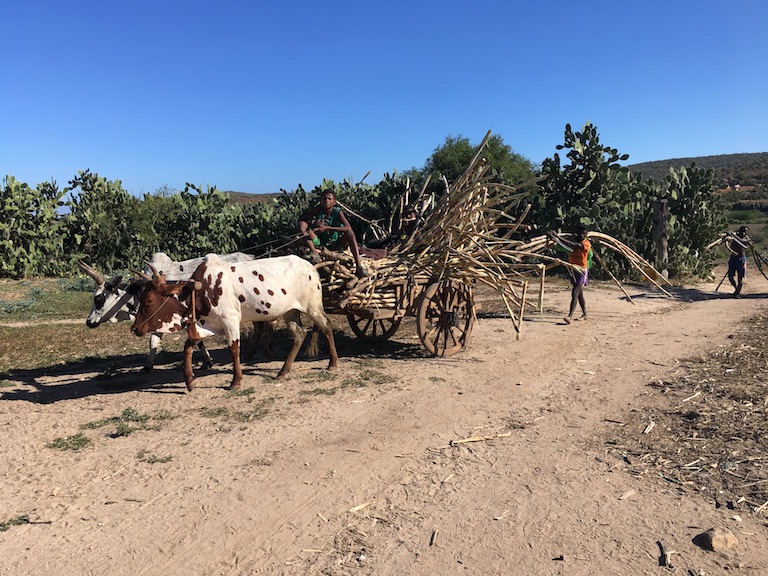
The glue that holds the protected area’s management scheme together is a community agreement known as a “dina,” a set of rules aligned with Malagasy law but enforced by local traditional authorities. Ankodida’s dina specifies hefty fines for those who cut planks or make charcoal in the noyau dur: the slaughter of a zebu for a communal meal together with a $20 fine payable to the local management committee. Roandria said the committee had levied those fines half a dozen times over the years, reinforcing a longstanding taboo against taking wood from the sacred forest.
“In Ankodida, the traditional cohesion is very strong still,” said Nanie Ratsifandrihamanana, WWF’s country director for Madagascar, so enforcing the rules “is rather easier than when you have lots of migrants coming in and things like that.”
The flip side of that social cohesion is the inherent difficulty of enforcing rules against kin and lifelong neighbors in Ankodida’s controlled use zones, where charcoal-making and woodcutting are allowed.
“This is where it starts to be fuzzy,” Ratsifandrihamanana said. “First there’s the question of, are people [members of] the COBA, or not in the COBA?” she said. The 36 members of Taranty Ambendra’s COBA pay modest annual dues. In theory, those dues are what allow them to graze cattle or cut wood in the controlled use zones, but it’s difficult to restrict access to land long considered a communal resource.
Further complicating matters in Ankodida, Roandria said, is the fact that people from outside occasionally arrive in the area with permits issued by the government forestry office that contradict the rules set forth in the management contract for the protected area. “We’ll protect the forest because it belongs to us,” Roandria said. “It’s because of the government that people cut trees,” he complained. “The permits to cut wood come from the city.”
The management contract between the community groups, the local government, and the Ministry of the Environment, Ecology, and Forests sets forth specific limits on wood that can be taken from each part of the protected area, in line with estimates of sustainable use. In practice, Roandria said, the COBA adheres to a softer standard. “For us, charcoal is not something people can do every day: they can only cut wood for charcoal to save their lives,” he said. The group tries to keep each family to a limit of eight sacks of charcoal per month, or roughly half the local output estimated before the creation of the protected area. It’s a dramatic reduction, but still far above a sustainable limit. The government, for its part has yet to conduct the three-year review that would allow the COBAs in Ankodida to renew the protected area’s contract, which expired a year ago.

“WWF has told us we can’t cut, but they haven’t told us how they can help us earn more,” Roandria explained. In 2002, when the project began, he recalled, people in Taranty Ambendra asked for a school and a small dam that would allow them to irrigate farmland on the banks of the river nearby. Fifteen years later, the development programs envisioned as a companion to conservation measures there are yet to materialize. “It’s only words,” he said. “It hasn’t happened yet.”
Similar shortcomings have stymied projects across Madagascar. In 2010, USAID commissioned a blistering report called “Paradise Lost?,” analyzing 25 years of environmental work in Madagascar. One of its central conclusions was that the success of USAID-funded conservation programs was often predicated on complementary health and development programs that rarely came through.
A five-year management plan for Ankodida released in 2008 is littered with references to “look for partners and financing” for activities like training locals in vegetable farming and making infrastructure improvements identified by the community. Zoely Ramanase, a consultant hired by WWF in 2015 to conduct a review of the organization’s strategy in the southeast, said many of the objectives spelled out in early project documents were proposals with no guarantee of funding.
“[WWF] played their role, but they couldn’t find partners. That was a government commitment,” she added. “It was the government, really, who should have been able to secure private sector partners.”
Not many conservationists in Madagascar — including public servants — would dispute that the state has often been an unreliable partner. In the political upheaval that followed the coup d’etat, key civil servants have been transferred or replaced repreatedly, sometimes more than once a year. Even so, under Malagasy law, protected area sponsors — WWF in this case— bear the ultimate responsibility for funding the projects they take on. As such, said Ratsifandrihamanana, WWF’s country director, the organization is working to boost the 40 percent share of a given project’s budget that has historically gone to supporting economic development.
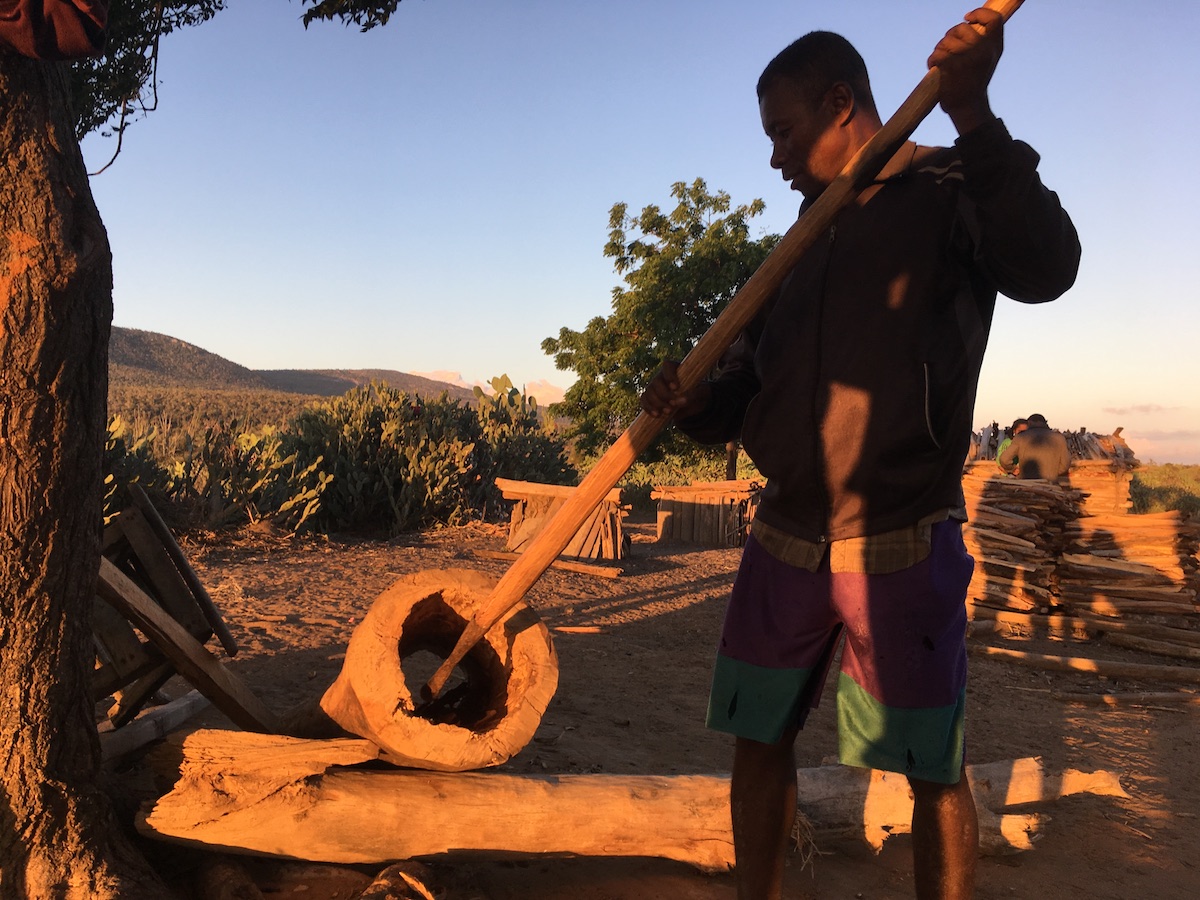
More support needed
Today, WWF’s involvement in Ankodida is limited to monthly visits to each community by a technician who collects data based on patrols by members of local COBAs, and aerial surveys to evaluate the extent of forest loss in the protected area. In Ankodida, WWF announced on its website, those aerial surveys showed a dramatic 77 percent reduction in the pace of clearing over five years, from 2012 to 2016.
Barry Ferguson, a researcher based in the nearby city of Tolagnaro who has done botanical surveys in Ankodida, raised doubts about the value of such skeletal monitoring. “A decline in forest loss, yes,” he said in an interview, “but a dramatic increase in selective cutting for planks and charcoal production.”
WWF and other conservation organizations expanded their footprints in Madagascar rapidly after the Durban Vision announcement, anxious to seize momentum at a time when conservation enjoyed high-level political support and to take advantage of the funding that came with it.
Ferguson saw a strain of wishful thinking in the crescendo. “NGOs can’t start the project with ‘What’s the problem? What will it take to solve it,”’ he said. “They start with the question of ‘Which donors are out there and how much have they got?’” As a result, he argued, “Conservation organizations have taken on very ambitious projects with orders of magnitude less money that what’s probably required to run a protected area.”
Recently, WWF withdrew from six of the eight forests [pdf] where it had spearheaded the creation of community-managed protected areas in the region of Anosy in the early 2000s (There are nearly 20 altogether in the region, many of which still have only “temporary status” as protected areas). WWF is pursuing an exit strategy for the remaining two, Ankodida and Ifotaka. WWF has been working to recruit another NGO as its successor in the southeast. Without a sponsoring organization, protected areas revert to the control of the Ministry of the Environment, Ecology, and Forests. In practical terms, this has tended to mean protected areas have little to no oversight, and are often referred to as “orphaned” sites.
WWF has cited declining security in the south as the dominant motivation for its withdrawal. But Ratsifandrihamanana says WWF has also been reckoning with the difficulty and cost of supporting durable community-led conservation. She said the organization is looking “to reduce our footprint, but also to be more realistic and focused, and do maybe less, but do it better.”
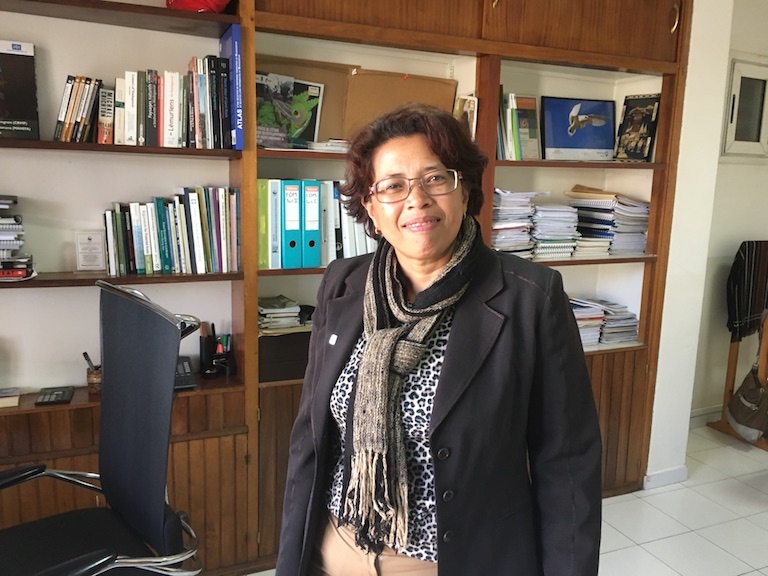
Miara Rakotomalala has worked with WWF in the southeast since 2009, overseeing fieldwork in a number of WWF-sponsored protected areas through a project with funding from Air France. Phase one of that project, he said, from 2009-2012, included the creation of 89 separate COBAs. “We’d hoped that at the end of the first phase, all the structures we’d set up would be fully operational,” Rakotomalala said. “Not exactly autonomous, but at least functional. But we saw in our evaluations that in the end, only 10 percent of our COBAs were functional, dynamic,” he said. There is no available public data on the health of forests supervised by these 89 COBAs; WWF did not provide requested information about the results of their ecological monitoring in the area.
Asked what made the biggest difference between the COBAs that worked and those that didn’t, Rakotomalala answered with a single word: “Accessibility.”
The more dynamic COBAs were simply those that were easier to get to, Rakotomalala said, places WWF staff could visit regularly enough to solidify organizations that had just been created when the project began. In retrospect, Rakotomalala said, “If I’d been a part of the team designing the project, I would have added at least four field agents,” or 50 percent more staff devoted to working with community organizations on site.
Increasing the capacity of COBAs, though, wouldn’t necessarily do more to promote outright development. In 2007, a USAID analysis [pdf] in eastern Madagascar found that nearly 100 percent of COBAs’ revenues came from membership fees paid by community members, while COBAs spent more than half of what they took in outside their communities. After expenses required to fulfill contractual requirements like signing forms in town and buying record-keeping supplies, there was little money left over to fund community development projects. While conservation groups had often pitched COBAs as a way not only to protect the forest but to attract development assistance and investment, this anticipated win-win seldom panned out. Instead, the USAID analysts found, COBAs often served as a net economic drain on the communities they ostensibly supported.
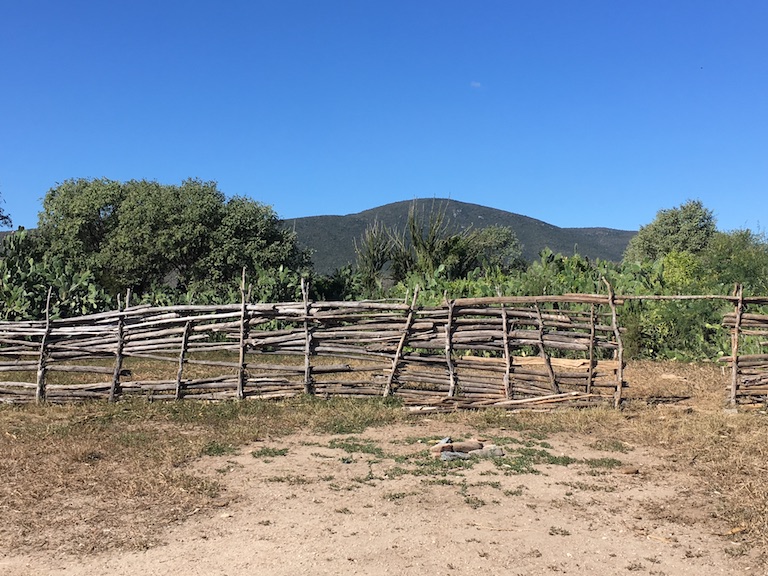
Others argue COBAs can still be highly beneficial with the right project design. “I’m a strong believer in the conservation and development approach,” said Serge Rajaobelina, the founder and director of the NGO Fanamby, and Leon’s son. Fanamby manages a number of protected areas based on this approach, including one in the country’s northeast, Loky Manambato, at the center of the global vanilla trade. Rajaobelina has tried to leverage the project’s location by pushing partnerships to sell vanilla directly to companies like L’Oreal and Costco. Fanamby’s goal is to engineer a supply chain where tight quality control and direct sales earn growers 50 or 60 percent of the end price of a kilo of vanilla, as opposed to the 2 to 3 percent they currently make. Scale, however, remains a challenge: “in Loky Manabato we have 300 producers, but there are 35,000 people there,” Rajaobelina said. “The protected area we are managing is the size of Reunion Island.”
“It’s not rocket science,” he added. “We need more involvement from the private sector. The NGOs don’t have enough money.”.
Roandria remains optimistic that people in Ankodida will continue to respect the dina that protects the noyau dur. Even without much help for development, he pointed out, people have been willing to cut back on charcoal production and volunteer with the COBA once a year to plant the Madagascar ocotillo trees used in construction. If the forest was intact during WWF’s first visits almost twenty years ago, it was because locals considered it sacred. “People respect conservation even if WWF hasn’t listened to our demands,” he said. The COBA, he thought, “can last a long time.”
Rowan Moore Gerety is a reporter and radio producer based in Miami. Read more of his work at www.rowanmg.com.
This is the first part of Mongabay’s multi-part series “Conservation in Madagascar” being published during the fall of 2017. The entire series will be collected here.
Citations
Gardner C.J., et al. (2008). Integrating traditional values and management regimes into Madagascar’s expanded protected area system: the case of Ankodida. In Protected landscapes and cultural and spiritual values 2.
Gorenflo L.J., et al. (2011). Exploring the association between people and deforestation in Madagascar.. In Human Population :197-221. Springer Berlin Heidelberg.
Pollini J., et al. (2014). The transfer of natural resource management rights to local communities. Conservation and Environmental Management in Madagascar. IR Scales (ed.): 172-192.
Rasolofoson R.A., et al. (2015). Effectiveness of Community Forest Management at reducing deforestation in Madagascar. Biological Conservation 184: 271-277.
Rasolofoson, R.A., et al. (2017). Impacts of Community Forest Management on Human Economic Well‐Being across Madagascar. Conservation Letters, 10(3), 346-353.
Shafer C.L. (2015). Cautionary thoughts on IUCN protected area management categories V–VI. Global Ecology and Conservation 3: 331-348.

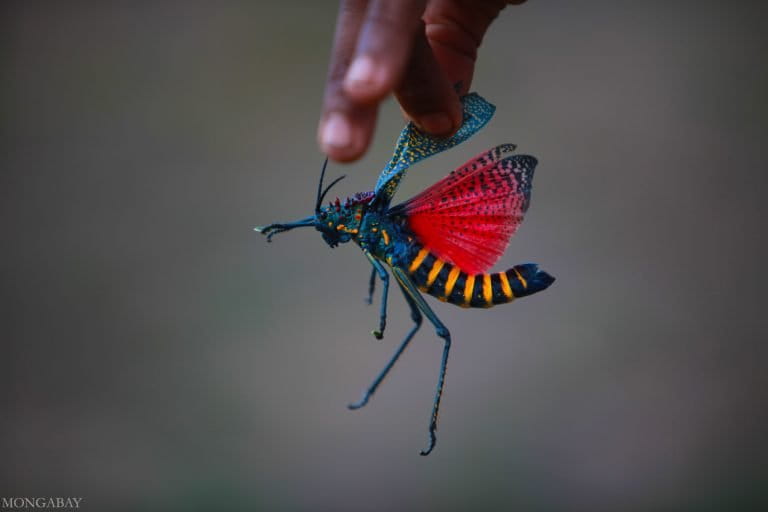
FEEDBACK: Use this form to send a message to the editor of this post. If you want to post a public comment, you can do that at the bottom of the page.
